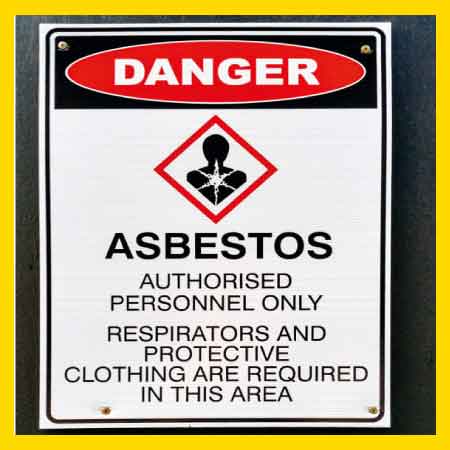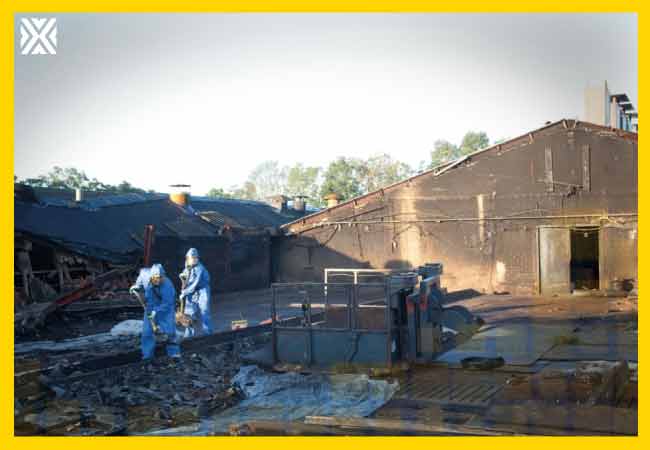Currency
September 21, 2019

Exposure to hazardous substances can lead to long-term health problems and can even be fatal. Alasdair Nairn, UK operations manager at SGS, a leading inspection, verification, testing and certification organisation, explains how the correct use of respiratory protective equipment (RPE) protects the wearer against the inhalation of dangerous dusts, mists, fumes, vapours and gases, and what to consider when selecting, using and maintaining it.
RPE is a specific type of personal protective equipment (PPE), which is designed to protect an individual against the inhalation of substances that are hazardous to health. Although RPE comprises a broad range of options, it will not perform as intended if used incorrectly and mistakes such as wearing the wrong
RPE for the job could give users a false sense of security. RPE must be able to do the job expected of it, which is why it is important to understand how it should be selected, used and maintained. Something in the air Hazardous workplace substances include welding fumes; solvent vapours; gases such as chlorine, ammonia and carbon monoxide; silica and lead dust, phosphide, bacteria, viruses and parasites. Breathing one or more of them could lead to a range of respiratory diseases and conditions including asthma, chronic obstructive pulmonary disease and cancer. It can also lead to other diseases of the airways and lungs such as airway obstruction and bronchitis.
One of the most well known hazards requiring the use of RPE when being removed or disturbed is asbestos. This relatively common substance is still responsible for the deaths of around 5,000 individuals each year – a figure nearly three times more than the number of people killed on the UK’s roads each year.

Asbestos was not banned completely in the UK until 1999 and the Health and Safety Executive (HSE) claims that up to two million commercial buildings still contain asbestos related materials, while the British Lung Foundation believes that there are 14 million homes in the UK that were built when it was regularly being used. Asbestos fibres cause cancers such as mesothelioma and lung cancer, and other serious diseases such as asbestosis and pleural thickening.
There is usually a long delay between first exposure to asbestos and the onset of the disease, which can vary from 15 to 60 years, so it is far from a problem of the past. Even so, there is no regulatory requirement for asbestos to be removed, as while products containing it are in situ and remain undamaged, they are not harmful. However, in situations where asbestos needs to be removed or disturbed due to maintenance or rebuilding work, there are strict guidelines in place to ensure that this is carried out safely and RPE forms an important part of the process.
RPE should only be used where adequate control of exposure cannot be achieved by other means, and when all other reasonably practicable control measures have been taken. Those in a position of responsibility are initially required to attempt to eliminate the hazard at source. If people can still breathe in contaminated air, despite the introduction of other controls, it is vital to use RPE. This also applies if there are short-term or infrequent exposures and the use of other controls is impractical, or as an interim measure while more permanent control measures are being implemented.
The Control of Asbestos Regulations 2012 came into force on 6 April 2012 and state that those responsible for maintenance or repair of nondomestic premises, or common parts of domestic premises, have a ‘duty to manage’ the asbestos in them, and to protect anyone using or working in the premises from the risks to health that exposure causes. Relevant parties must identify where it is, its type and condition, assess the risks and manage and control these risks. A management survey provides information of all asbestos containing materials for the register while regular re-inspection surveys monitor the condition of these materials so that the information is kept up to date.
In the majority of cases, work with asbestos needs to be carried out by a licensed contractor. However, at an early stage, the expertise of a UKAS accredited asbestos analysis service provider should be employed to check the quality of the work and assess whether the area is suitable to be re-occupied at the end of the removal works. Analyst services can prove crucial to the removal process, the protection of workers and safety of other nearby persons. However, analysts do not provide supervisory control for asbestos work and do not directly carry out licensable work as defined in Regulation 2 of the Control of Asbestos Regulations 2012.
People should never be put at risk, so RPE should be used where hazardous substances of any kind may be present in the air, where there could be a deficiency of oxygen, or where there is the possibility of a sudden high concentration of harmful substances. It is why a thorough risk assessment is vital to identify the harmful substances that are present and in what concentrations, how workers can be harmed and how to prevent exposure. This should always be carried out before any work begins to determine work activities for which RPE is mandatory.
RPE is a specific type of personal protective equipment (PPE), which is designed to protect an individual against the inhalation of substances that are hazardous to health. Although RPE comprises a broad range of options, it will not perform as intended if used incorrectly and mistakes such as wearing the wrong
RPE for the job could give users a false sense of security. RPE must be able to do the job expected of it, which is why it is important to understand how it should be selected, used and maintained. Something in the air Hazardous workplace substances include welding fumes; solvent vapours; gases such as chlorine, ammonia and carbon monoxide; silica and lead dust, phosphide, bacteria, viruses and parasites. Breathing one or more of them could lead to a range of respiratory diseases and conditions including asthma, chronic obstructive pulmonary disease and cancer. It can also lead to other diseases of the airways and lungs such as airway obstruction and bronchitis.
One of the most well known hazards requiring the use of RPE when being removed or disturbed is asbestos. This relatively common substance is still responsible for the deaths of around 5,000 individuals each year – a figure nearly three times more than the number of people killed on the UK’s roads each year.

Asbestos was not banned completely in the UK until 1999 and the Health and Safety Executive (HSE) claims that up to two million commercial buildings still contain asbestos related materials, while the British Lung Foundation believes that there are 14 million homes in the UK that were built when it was regularly being used. Asbestos fibres cause cancers such as mesothelioma and lung cancer, and other serious diseases such as asbestosis and pleural thickening.
There is usually a long delay between first exposure to asbestos and the onset of the disease, which can vary from 15 to 60 years, so it is far from a problem of the past. Even so, there is no regulatory requirement for asbestos to be removed, as while products containing it are in situ and remain undamaged, they are not harmful. However, in situations where asbestos needs to be removed or disturbed due to maintenance or rebuilding work, there are strict guidelines in place to ensure that this is carried out safely and RPE forms an important part of the process.
Last resort
RPE should only be used where adequate control of exposure cannot be achieved by other means, and when all other reasonably practicable control measures have been taken. Those in a position of responsibility are initially required to attempt to eliminate the hazard at source. If people can still breathe in contaminated air, despite the introduction of other controls, it is vital to use RPE. This also applies if there are short-term or infrequent exposures and the use of other controls is impractical, or as an interim measure while more permanent control measures are being implemented.
The Control of Asbestos Regulations 2012 came into force on 6 April 2012 and state that those responsible for maintenance or repair of nondomestic premises, or common parts of domestic premises, have a ‘duty to manage’ the asbestos in them, and to protect anyone using or working in the premises from the risks to health that exposure causes. Relevant parties must identify where it is, its type and condition, assess the risks and manage and control these risks. A management survey provides information of all asbestos containing materials for the register while regular re-inspection surveys monitor the condition of these materials so that the information is kept up to date.
In the majority of cases, work with asbestos needs to be carried out by a licensed contractor. However, at an early stage, the expertise of a UKAS accredited asbestos analysis service provider should be employed to check the quality of the work and assess whether the area is suitable to be re-occupied at the end of the removal works. Analyst services can prove crucial to the removal process, the protection of workers and safety of other nearby persons. However, analysts do not provide supervisory control for asbestos work and do not directly carry out licensable work as defined in Regulation 2 of the Control of Asbestos Regulations 2012.
Risky business
People should never be put at risk, so RPE should be used where hazardous substances of any kind may be present in the air, where there could be a deficiency of oxygen, or where there is the possibility of a sudden high concentration of harmful substances. It is why a thorough risk assessment is vital to identify the harmful substances that are present and in what concentrations, how workers can be harmed and how to prevent exposure. This should always be carried out before any work begins to determine work activities for which RPE is mandatory.









